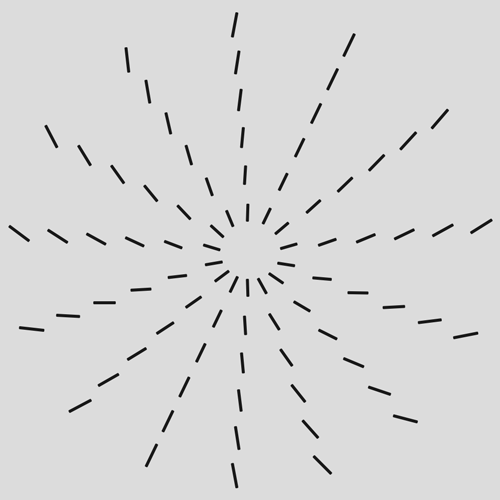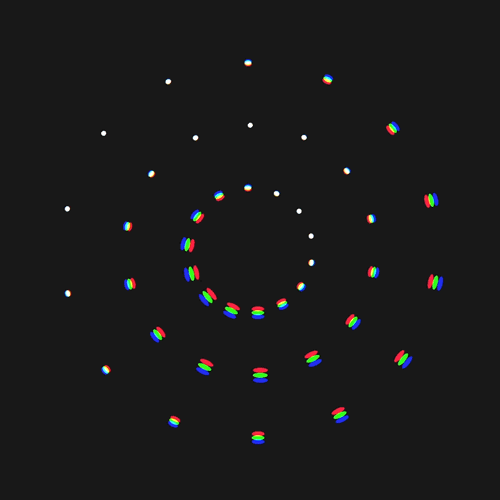Using Processing to create zoetrope designs
Until now, all of the embroidered sequences I have animated have come about through manual processes. ‘Hobbling’ started as a traditional animation on pencil and paper, ‘Breathing’ was animated in Flash using a graphics tablet and ‘Drifting’ was created in Maya by animating the path of a cube and ghosting all its positions in one frame.
In each of these instances, I have had to calculate all the angles of rotation that the animation will undertake while on the turntable, and have gone through numerous steps for compositing all the frames into one disc layout. Repetition and maths are two strengths of computer programming, so I decided to try my hand today at using code to design animated sequences.
This first design uses a series of nested loops to generate the pattern. The illusion of movement is made by slightly offsetting the location and rotation of each shape depending on its order in the loop. Using simple sine waves, I was able to ensure that the shapes returned to their original positions to complete the loop.
Unlike most of my former designs where I had to animate each frame individually and composite them together, using this method allowed me to display and playback the whole disc instantly. This greatly improved the speed at which I could iterate upon these designs, which ultimately led me to this next animation.

